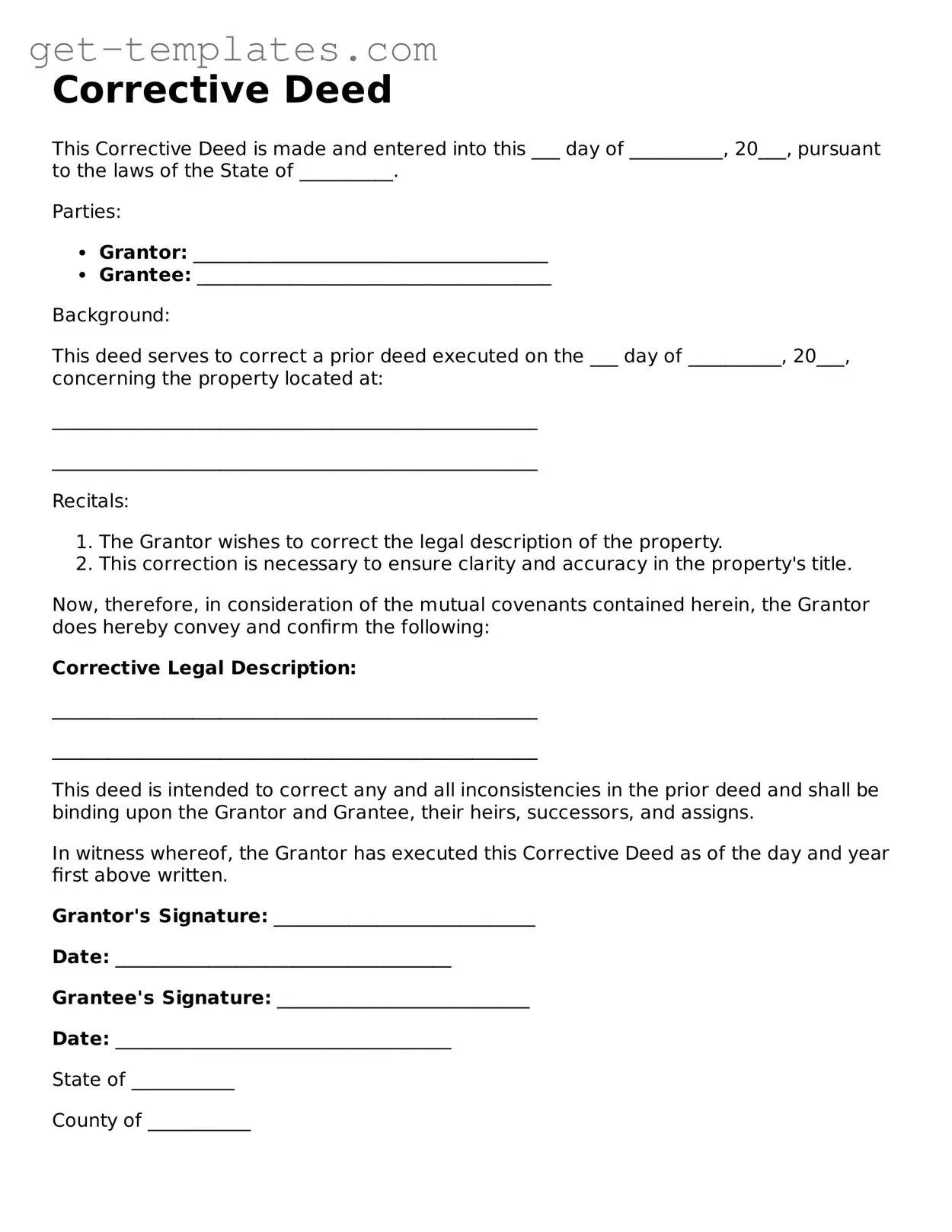Corrective Deed
This Corrective Deed is made and entered into this ___ day of __________, 20___, pursuant to the laws of the State of __________.
Parties:
- Grantor: ______________________________________
- Grantee: ______________________________________
Background:
This deed serves to correct a prior deed executed on the ___ day of __________, 20___, concerning the property located at:
____________________________________________________
____________________________________________________
Recitals:
- The Grantor wishes to correct the legal description of the property.
- This correction is necessary to ensure clarity and accuracy in the property's title.
Now, therefore, in consideration of the mutual covenants contained herein, the Grantor does hereby convey and confirm the following:
Corrective Legal Description:
____________________________________________________
____________________________________________________
This deed is intended to correct any and all inconsistencies in the prior deed and shall be binding upon the Grantor and Grantee, their heirs, successors, and assigns.
In witness whereof, the Grantor has executed this Corrective Deed as of the day and year first above written.
Grantor's Signature: ____________________________
Date: ____________________________________
Grantee's Signature: ___________________________
Date: ____________________________________
State of ___________
County of ___________
On this ___ day of __________, 20___, before me, a Notary Public, personally appeared ____________________________________, known to me (or satisfactorily proven) to be the person whose name is subscribed to this instrument, and acknowledged that (s)he executed the same for the purposes therein contained.
In witness whereof, I hereunto set my hand and official seal.
Notary Public Signature: ______________________
My Commission Expires: ______________________
